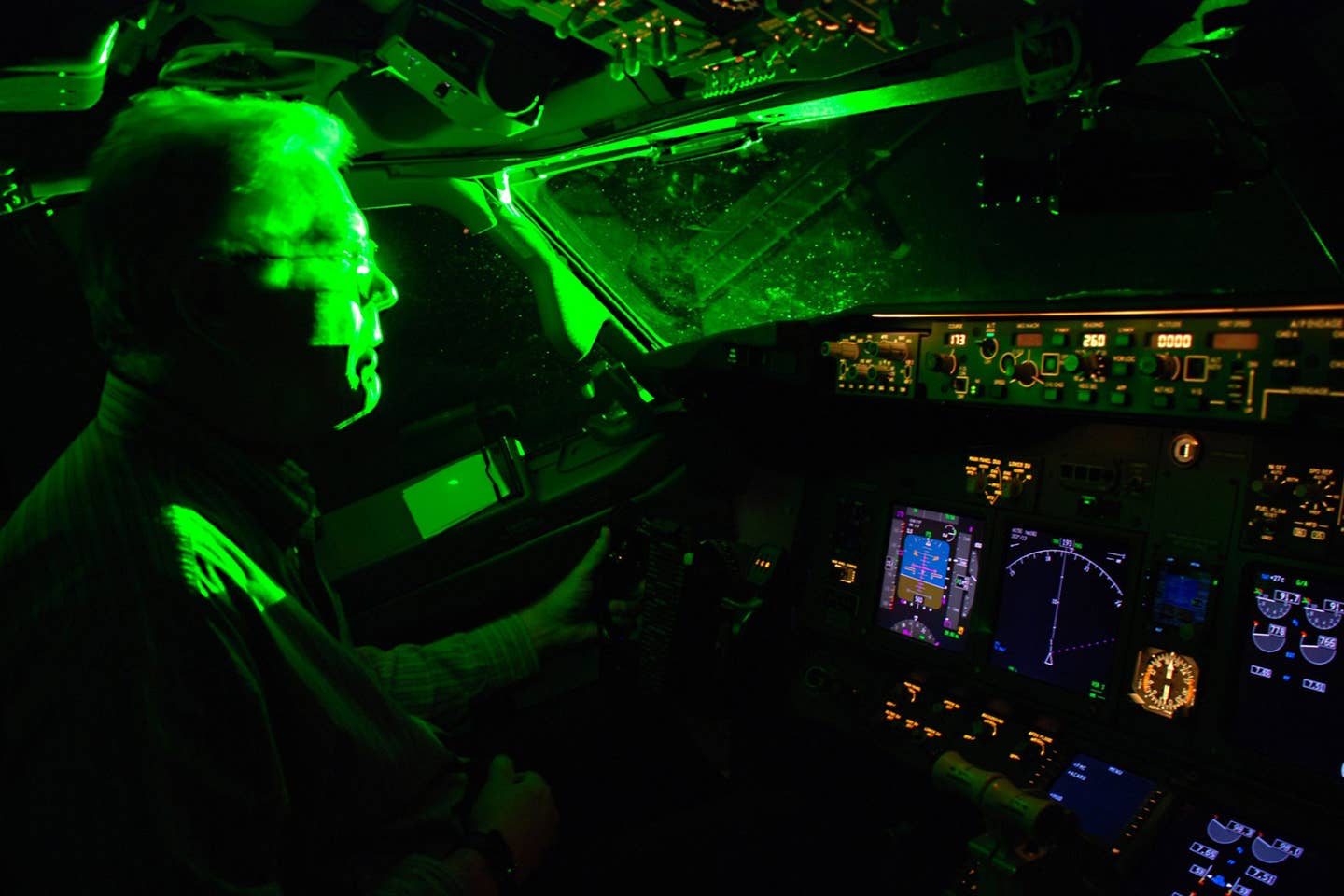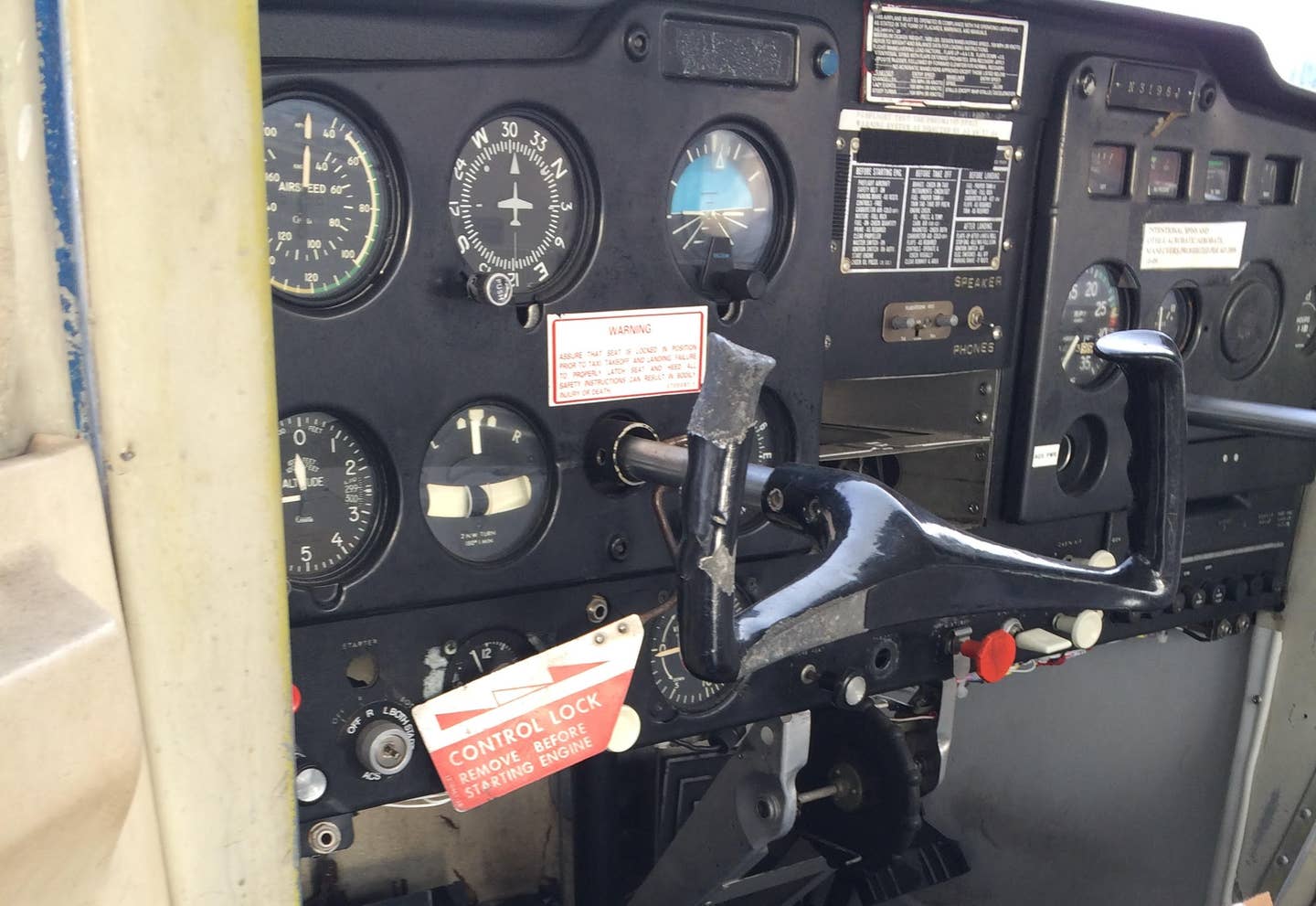What to Do if You’re Hit with a Laser Strike
A recent FAA report suggests that these incidents are happening more often. How should you handle it if one happens to you?

You’re most likely to be affected by laser strikes at low altitudes, in critical phases of flight, and at night. [File Photo Courtesy: NBAA]
The FAA recently reported that laser strikes reached an all-time high in 2021, with 9,723 reports of such strikes from pilots. This is a 41 percent increase from 2020, when pilots reported 6,852 laser strikes. Indeed, the dangerous trend only keeps climbing year after year, even though the FAA has tried to educate the public on the dangerous effects of shining a laser at an aircraft.
Even worse, between 2004—when the FAA began tracking the total number of U.S. laser/aircraft incidents—and December 31, 2021, the number of incidents totaled 71,435.
One would think that hefty fines would deter people: shining lasers at aircraft can earn violators fines by the FAA up to $11,000 per violation and up to $30,800 for multiple laser incidents. In fact, in 2021, the FAA issued $120,000 in fines for laser strikes. It’s even possible to face criminal penalties from federal, state, and local law enforcement agencies.
What are the odds that you might get hit by a laser? Here’s some perspective. Compared to National Weather Service data on the odds of someone on the ground being struck by lightning, pilots in aircraft were between 500 and 700 times more likely to be struck by a laser.
What if It Happens to You?
You’re most likely to be affected by laser strikes at low altitudes, in critical phases of flight, and at night. Even without visual incapacitation, it can be very distracting, stealing your attention when you need it the most.
The last thing you want to do is overreact.
One thing that you can do to minimize the effect of a laser strike is to ensure that your aircraft is always trimmed for the particular phase of flight. That stability will mean that even if you’re distracted for a brief moment, the airplane should maintain its attitude.
Preemptively, you want to ensure that you have a clean aircraft windscreen before departure, because an imperfect or unclean windscreen can cause the laser light to spread out, creating a glare that can temporarily obscure all vision inside the cockpit.
If you’re about to land, be prepared—as practically as possible—to execute a go-around to give your vision time to reacclimate to the environment. You might need to avert your eyes to the instrument panel, and use the gauges or glass to assist you in positioning the aircraft in the proper attitude for the go-around.
Once you’re out of the affected environment, you may experience the visual effects of flash blindness, afterimage, or glare. According to Dr. Nakagawara at the Civil Aerospace Medical Institute (CAMI) “the severity of these visual effects can vary greatly among pilots. Factors such as age and existing eye condition can prolong the recovery time for normal vision after a laser event. Some pilots can even experience a temporary total loss of vision.”
The important thing for you to do at this moment is to intentionally maintain a scan of the environment using your peripheral vision and break up the sky into segments to help with focus.
If you can get a safe cruising altitude and maintain level flight, that will hopefully give your eyes time to recover, and with the help of ATC, you can be re-sequenced for landing.
What else can you do? Here’s the FAA’s official suggestions:
- Anticipate: When operating in a known or suspected laser environment, the non-flying pilot should be prepared to take control of the aircraft.
- Aviate: Check aircraft configuration and, if available, consider engaging the autopilot to maintain the established flight path.
- Navigate: Use the fuselage of the aircraft to block the laser beam by climbing or turning away.
- Communicate: Inform air traffic control (ATC) of the situation. Include location/direction of the beam, your present location, altitude, etc. Once on the ground, request and complete a “Laser Beam Exposure Questionnaire,” provided by ATC.
- Illuminate: Turn up the cockpit lights to minimize any further illumination effects.
- Delegate: If another crew member has avoided exposure, consider handing over control to them.
- Attenuate: Shield your eyes when possible (hand, clipboard, visor, etc.). Do not look directly at the laser beam and avoid drawing other crewmembers’ attention to the beam.
- Do Not Exacerbate: Avoid rubbing of eyes and possibly inducing further injury.
- Evaluate: If any visual symptoms persist after landing, get an examination by an eye doctor.
Admittedly, pilots flying solo might find this more challenging, and they will have to stay calm and exercise as much control as possible.
In the meantime, I hope that more is being done to minimize or eliminate this hazard to pilots. The FAA’s Laser Safety page provides more helpful insight.

Subscribe to Our Newsletter
Get the latest FLYING stories delivered directly to your inbox






